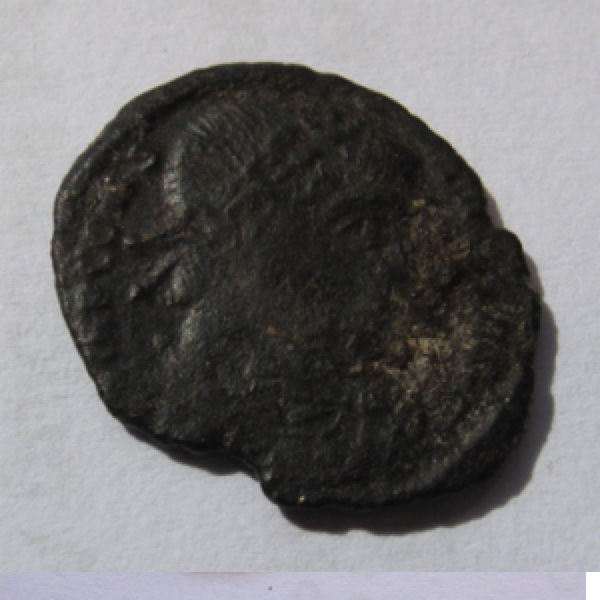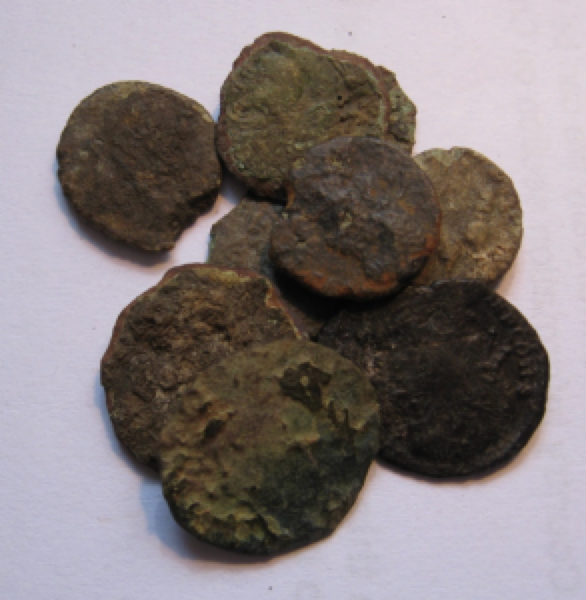Archaeological Finds - Roman Coins
This find is actually a collection of Roman coins. The site is just outside Minting and has turned up several tens of coins over the past year or so. A collection is currently with Adam Daubney, the local Portable Antiquities Scheme (PAS) coordinator. However, the small collection here has been detected in the past few months. The site is about a mile outside of the village and has no visible features on the ground at all. It is a ploughed field with farmhouse nearby. However these coins and also the wide scatter of Roman pottery indicate that in the 3rd and 4th centuries this was a Roman-British settlement, probably a farmstead. It is likely that the inhabitants were still living in round houses from the pre-Roman era as there is no evidence of a brick building and certainly no evidence of anything as grand as a villa.
The coins are low value. It is estimated that you would need around 7000 of these small denomination coins to buy one gold piece even in Roman times. Therefore these would probably have been used for local trading or buying small items.
They are made of bronze and having been in the ground for around 1700 years they are understandably in poor condition. Detectorists tend to call them ‘grots’ but that doesn’t take away from the fact that they are genuine Roman coins. We have detected a couple of coins on this site that are likely to be contemporary copies where the local Romano-British population was copying Roman coins.
Most are difficult to interpret but some (picture 2) have clear images on them. This one is probably Constantine II who reigned from 317 to 340 AD. However, at this time the empire was starting to break down and there were others who declared themselves to be emperor in parts of the empire and this may also be one of them. It is certainly an early 4th century coin of the Roman Empire.
There is a small chance that this collection of coins is part of a small hoard that has been ploughed out and therefore scattered across a small section of the field. However, if this is the case there is no way of verifying it.
However, we can say that there were Britons living as Romans in the Minting and Gautby area.
By David Allsop

